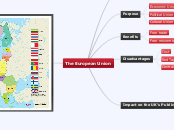av Daniel Ejeteh för 2 dagar sedan
119
The Role of Water in Toronto’s Ecological Footprint: Assessing Human Impact on Urban Water Systems
Toronto is focusing on sustainable practices to address issues related to water consumption, environmental impact, and climate change. Efforts include promoting sustainable agriculture near water bodies, reducing emissions through green transportation, and implementing water-saving techniques such as low-flow appliances and smart irrigation systems.









